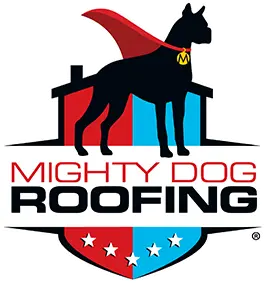Your roof is one of the most important components of your home, protecting it from the elements and keeping your family safe. However, when damage occurs, navigating insurance claims and warranties can be challenging. This guide will help Connecticut homeowners understand how to file an insurance claim for roof damage, what’s covered under homeowner’s insurance, and how roofing warranties and guarantees work.
How to File an Insurance Claim for Roof Damage
Filing an insurance claim for roof damage can be a stressful process, but taking the right steps can ensure a smoother experience and a better chance of receiving the coverage you deserve.
1. Assess the Damage
After a storm or other damaging event, inspect your roof for visible signs of damage, such as missing shingles, leaks, or dents from hail. If the damage is severe, take temporary measures to prevent further issues, like covering exposed areas with a tarp.
2. Document Everything
Take clear, high-quality photos and videos of the damage from multiple angles. Keep records of any emergency repairs, receipts for temporary fixes, and notes on when the damage occurred.
3. Contact Your Insurance Provider
Notify your insurance company as soon as possible to start the claims process. Be prepared to provide details about the damage and any preventative measures you’ve taken.
4. Schedule an Inspection
Your insurance company may send an adjuster to assess the damage. It’s beneficial to have a roofing contractor present during the inspection to ensure all damages are properly evaluated.
5. Review Your Policy and Claim Decision
Once the insurance adjuster assesses the damage, they will provide a claim estimate. Compare this with your policy coverage to ensure you’re getting the maximum benefit. If you disagree with the estimate, you can request a second inspection or work with a public adjuster.
What’s Covered Under Homeowner’s Insurance?
Homeowner’s insurance policies can vary, but they typically cover certain types of roof damage. Understanding what’s included in your policy can help you determine whether filing a claim is worthwhile.
1. Covered Roof Damage
Most insurance policies cover damage caused by:
- Hailstorms
- Windstorms
- Falling debris, such as tree limbs
- Fire or lightning strikes
- Vandalism
2. What’s Not Covered?
Insurance companies often exclude coverage for:
- General wear and tear due to aging
- Poor maintenance or neglect
- Pre-existing damage
- Issues related to improper installation
If your roof is nearing the end of its lifespan, your insurance may only cover part of the replacement costs, based on the depreciated value of the roof.
Understanding Roofing Warranties and Guarantees
Beyond insurance coverage, roofing warranties and guarantees offer homeowners additional protection. These can help reduce out-of-pocket expenses if an issue arises with the roofing materials or installation.
1. Manufacturer’s Warranty
This type of warranty covers defects in roofing materials. Depending on the brand and product, manufacturer warranties can range from 10 to 50 years or even a lifetime for certain premium shingles.
2. Workmanship Warranty
Roofing contractors often provide workmanship warranties to cover installation errors. These warranties typically last between 5 to 10 years, ensuring that any issues related to poor installation are fixed at no extra cost.
3. Limited vs. Full Coverage
Some warranties provide prorated coverage, meaning the value of coverage decreases over time. Full coverage warranties, on the other hand, may offer complete replacement or repair within a certain period.
4. Understanding Warranty Exclusions
Homeowners should carefully read their warranty terms, as certain conditions can void coverage. For example:
- Using non-approved materials
- Failing to maintain the roof properly
- DIY roof repairs that cause damage
Final Thoughts
Navigating roof insurance claims, coverage details, and warranties can be complex, but understanding your rights and responsibilities makes the process easier. Connecticut homeowners should review their policies regularly, document roof conditions before and after storms, and consult with roofing professionals to ensure they get the best coverage possible. By staying informed, you can protect your home and avoid unnecessary expenses when roof damage occurs. If you're in need of a roof replacement, try our free instant roof quote today.


